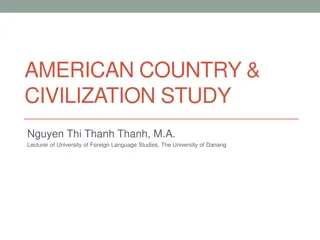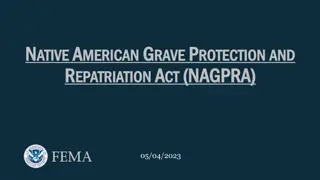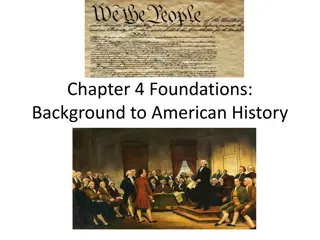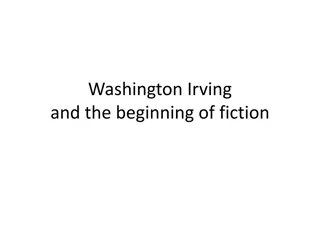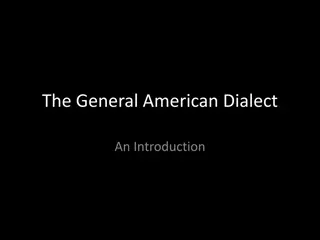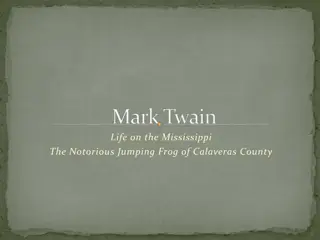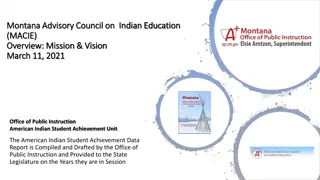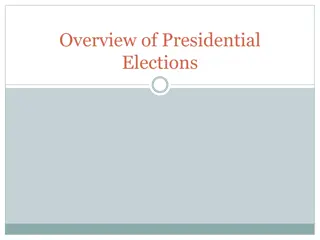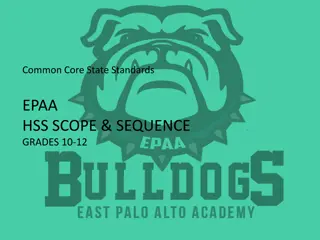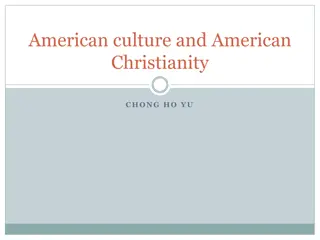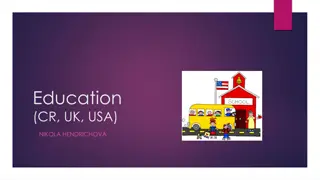American Education System Overview
The American education system reflects the fundamental value of equality of opportunity, with public schools established in 1825 to reduce social-class distinctions. The system comprises various types of schools and follows an educational ladder from preschool to high school. Americans believe in providing equal educational opportunities for all, aiming to empower individuals to seek higher status in life.
Download Presentation

Please find below an Image/Link to download the presentation.
The content on the website is provided AS IS for your information and personal use only. It may not be sold, licensed, or shared on other websites without obtaining consent from the author.If you encounter any issues during the download, it is possible that the publisher has removed the file from their server.
You are allowed to download the files provided on this website for personal or commercial use, subject to the condition that they are used lawfully. All files are the property of their respective owners.
The content on the website is provided AS IS for your information and personal use only. It may not be sold, licensed, or shared on other websites without obtaining consent from the author.
E N D
Presentation Transcript
American Culture 1 Lecturer: Lam Phan, M.A Email: lamphan83@gmail.com Phone: 0983 685 405
UNIT 5: EDUCATION IN THE UNITED STATES AN OVERVIEW OF THE EDUCATIONAL SYSTEM
GROUP WORK Discuss in group in 35 minutes 1. The establishment of public schools in America 2. Types of schools in the United States 3. Educational ladder in the United States 4. Attending an American university 5. Extracurricular activities 6. Educating the individual
Americans believe that everyone deserves an equal opportunity to get a good education WHICH BASIC VALUE DOES THE EDUCATION INSTITUTION IN THE US REFLECT? Equality of opportunity (equal opportunity)
TYPE OF SCHOOLS Public school Private school Home Schooling
THE ESTABLISHMENT OF PUBLIC SCHOOLS IN AMERICA In 1825 Americans established their basic system of public schools. For Against These institutions would help reduce social-class distinctions in the US by educating children of all social classes in the same common school Some wealthier Americans opposed the first public school in the US because they think these schools could weaken social class barriers
The system of Public schools reaffirm the ideal of equal opportunity for all people The tendency of public education encourages people to seek a higher status in life Tocqueville finally concluded that public education in the United States would give Americans the desires and practical tools to better their position in life.
THE EDUCATIONAL LADDER Preschool: 3-4 years old Kindergarten: start at 5-6 years old Elementary school: 5-6 years Middle school (junior high): 2-3 years High school (senior high): 4 years 12 years of elementary, middle school and senior high school
PATTERN USUALLY PREVAILS IN THE COMMUNITY
After high school: Undergraduate studies College/University: bachelor s degree (law, medicine, etc) Community college: associate degree (two-year course) Higher education/Graduate studies: master s degree, doctoral degree
TUITION American public schools are free and open to all at elementary and secondary (high school) level Public colleges and universities charge tuition and have competitive entrance requirements
CHARTER SCHOOLS a school that is paid for with public money but is organized by a private group for a special purpose and admits only students who meet its standards
PRIVATE SCHOOLS - Religious schools: associated with churches and receive financial support from them - Elite private schools: serve mainly upper-class children, high tuition, good education
CONFLICTS WITH THE IDEAL OF EQUALITY OF OPPORTUNITY - Elite schools give extra educational and social advantage - Wealthier school districts have beautiful buildings, up- to-date technology, latest science equipment - Poorer school districts have older buildings, and less modern equipment.
ATTENDING AN AMERICAN UNIVERSITY - All university students must pay tuition - The cost is very high and it is rising rapidly - Tuition of public universities is lower than private ones - Wealthy students have more choices - Students aid: loans, scholarship
From 1900 to 2000, the percentage of young Americans who take at least some college courses increased enormously, from less than 10 percent to over 50 percent.
COMMUNITY COLLEGE PROGRAM - Last for 2 years - Pay much less in tuition - Offer wide range of programs - Achieve associate degree - Be able to transfer to a state university
EDUCATIONAL VALUES Americans value education for its monetary value The more schooling people have, the more money they will earn when they leave school. Both undergraduate and graduate degrees in STEM (science, technology, engineering, math) fields offer high salaries
HIGHER EDUCATION The advent of new technology = more and more education is required New jobs in US require graduate degree Many people combine working with taking classes at a college + distance learning + elearning (MOOCs= Massive Open Online Courses)
EDUCATING THE INDIVIDUAL American school tend to put more emphasis on developing critical thinking skills Students are encouraged to ask questions, think for themselves, express their own opinions in class Which American value does this reflect? A: individual freedom and self-reliance
DEVELOP IMPORTANT SKILLS Social skill Interpersonal skill Critical-thinking skill Leadership
EXTRACURRICULAR ACTIVITIES These activities are as important as class work - Athletics (Competitive sports): American football, basketball, baseball, Soccer students teamwork and winning spirit - Student government: develop competitive, political and social skills. - Clubs: art, music, drama, debate, foreign languages, photography, volunteer work, community service teach All aim at helping the students to become more successful in later life
EDUCATION POLICIES/LAWS NCLB (No Child Left Behind) Act teachers are accountable for student s progress schools and







